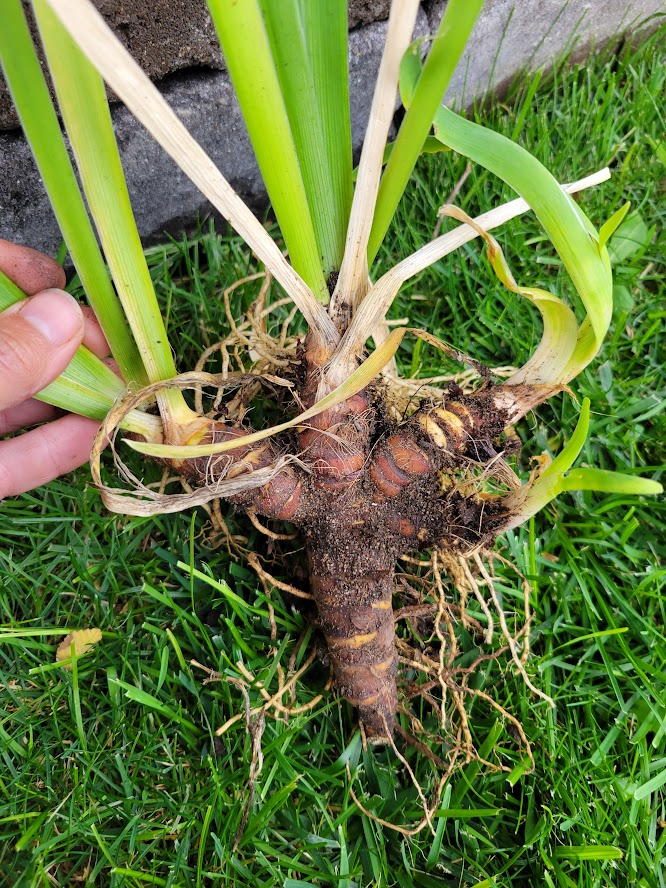
Perennial plants that grow in a ring around a dead center, no longer produce good numbers of flowers or are edging into another plant’s growing space are probably in need of division. Many perennials are vigorous growers and need to be reined in. Asters, shasta daisies and goldenrod fall into this category. Others like bearded iris or daylilies simply need rejuvenation every three to five years.
Spring blooming perennials do best if they are divided in the fall. Allow four to six weeks for the divisions to re-establish before the ground freezes. Summer and fall blooming plants should be divided in the spring before they begin to grow, ideally as soon as the growing points emerge. Iris and daylilies are best divided a few weeks after they have flowered for the season. When dividing plants, pick a cool, cloudy day to minimize shock to the plant.
Using a garden fork or spade gently loosen the entire clump and then dig under the plant, preserving as many roots as possible. Remove the majority of the soil and expose the rhizome or clump by gently shaking or washing away the soil. Then, with a sharp knife or pruning shears, slice the plant into several new pieces. Leave a minimum of two to three growing points on each new clump. Discard any dead or diseased parts.
Plant the divisions in freshly prepared soil, and keep them moist until they re-establish. Share surplus divisions with friends.
It’s a good idea to start with a single clump of one kind of plant until you master division, rather than risk an entire planting. Alternatively, when dividing particularly large plants, you may be able to remove a portion of a clump and leave the rest undisturbed. Replace the piece you remove with amended soil.
For more information, see the following Colorado State University Extension fact sheet(s).



